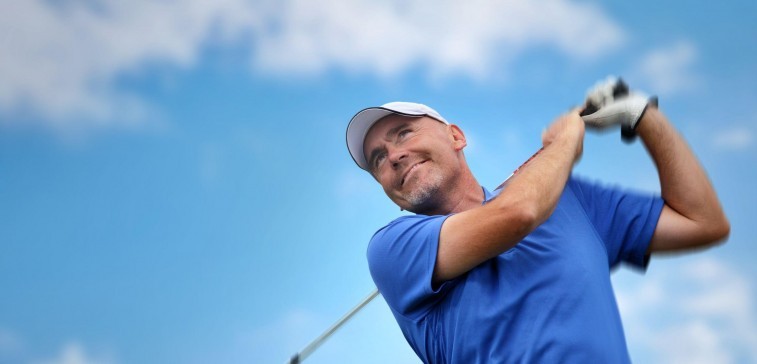
By: Dr. Jordan Mackner, DC Treating the Golf Athlete’s musculoskeletal pain is often complicated by a number of factors. By nature, golf is a very repetitious sport and the golf athlete is a highly motivated person that genuinely enjoys their sport. For this reason, the golf athlete will most often turn up with chronic overuse injuries such as tendonitis, bursitis, arthritic joint pain, inflammatory based joint pain, and strains/sprains. When injured, a big part of their life is missing. We hear often about golf athletes that either voluntarily choose to rest or are told by their doctors or rehab professionals (physical therapists, athletic trainers, coaches, etc.) to rest when injured. Most athletes will accept this recommendation without question, but should you accept the rest recommendation? Pause for a moment and let it sink in. Now reassess and continue reading as we are about to challenge different treatment styles for muscle and joint based pain in golfers. When approaching a golfer’s musculoskeletal pain there are a couple factors your health care provider should take into account. #1.) They need to do a proper exam and reveal what is causing your muscle and joint pain. #2.) They should go over all available treatment options for you and let you know the risks and benefits of each. #3.) Lastly, and maybe most importantly, they should try and decide whether your musculoskeletal pain is related specifically to what you are doing in your sport. If your provider is not watching you play golf or at least having you simulate your activity in some way to see your biomechanics, you may ask yourself another question. What am I doing here? Rest and treatment never fixes bad mechanics. Many of the injuries that are treated in golf athletes are due to repetitive bad mechanics. When you rest, you NEVER fix the mechanics that led to the injury. You essentially “mask” the problem. When you continue with your sport as most golf athletes do, the pain may be gone as the overload to the tissue has been reduced temporarily, but the bad mechanics are still there. These mechanics can again lead to future problems. Would you rather fix the problem right the first time or have it recur? Another sign of bad mechanics is a treatment plan that is helping the patient and they are seeing results, but the second they go back to playing golf they are back in pain. This leads us back to WHY your provider needs to do a proper assessment, perform a functional analysis, and watch you perform your activity. If the golfer’s mechanics turns out to be the deciding factor in WHY they have their injury, then it’s the provider’s job to decide whether it is a physical limitation problem (mobility, stability, flexibility, etc.) or is it a coaching flaw that will require work with a teaching professional. After this question is answered they are faced with two options. They can either take steps to change their mechanics by seeking the proper care and advice OR they can have continuous preventative and maintenance care throughout their career if they are stubborn enough to not change their mechanics. Now, this may seem like a no brainer, but we all know how inherently stubborn golfers. Sometimes, changing biomechanics may be awkward at first resulting in higher scores. And, I once had a golfer tell me they would rather shoot low scores and play in pain then change their mechanics to help their body and shoot worse. I told them I was totally fine with that decision, but they also needed to know that they will require wellness care throughout their playing career as they will always turn up with musculoskeletal pain problems stemming from their golf game. This leads us back to resting an injury will never fix the physical limitations or bad mechanics of the golfer. If you are one of those golfers that needs to take a week off here and there because you’re in so much pain try this: get an exam, get assessed, and get an answer. As intermittent rest is most often just a Band-Aid.
